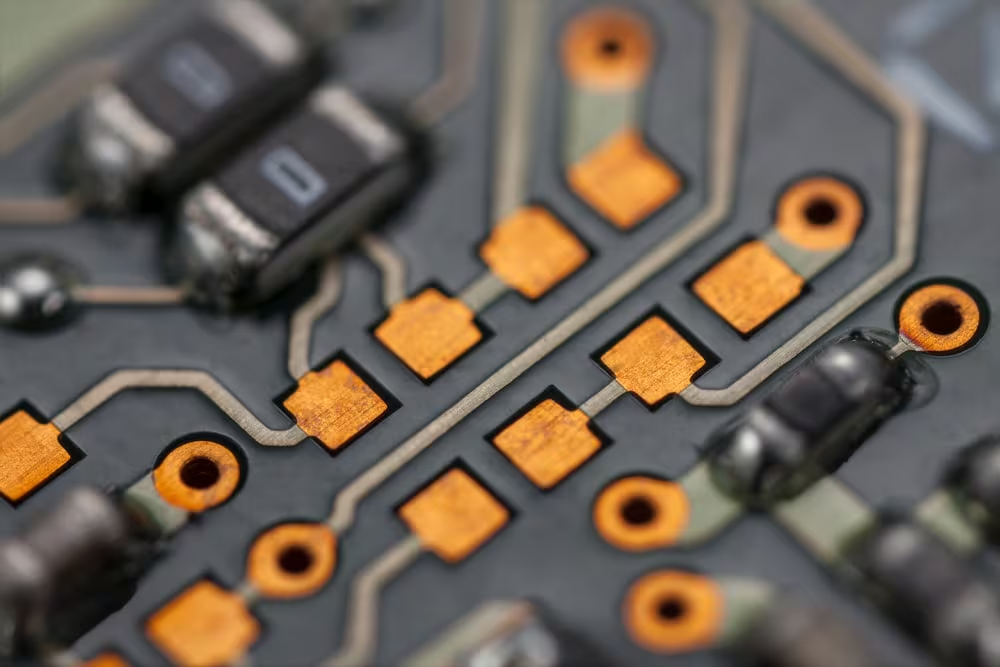
What is the Use of a Decoupling Capacitor?
A decoupling capacitor is a crucial aspect of power systems. It is one of the essential ways to stabilize the power voltage of digital integrated circuits and ensure their proper functioning. It is necessary to tackle problems due to noise and power issues that affect digital devices.
These capacitors can prove helpful to analog and digital electronic circuits to deal with power voltages and external noise. It is a passive component that leads to the operational efficiency of the circuits.
You can read through this article to understand a decoupling capacitor, their importance, and the proper placement in electrical circuits.
An Introduction to a Decoupling Capacitor
A decoupling capacitor is a capacitor that is used to suppress high-frequency noise that occurs in power supply signals. This component can store energy and prevent any quick changes in the voltage.
One of the main purposes of using decoupling capacitors is to isolate and decouple the circuits from power and noises from other devices, shared power, and ground.
It is the capacitor that stabilizes the voltage on a power supply line. These decoupling capacitors also act as a reservoir to absorb the excess charges when the voltage increases above the usual rated value. They also release the charges when the voltage drops.
A bypass capacitor prevents any noise and external interference from entering the system. This capacitor bypasses the noise to the ground. It ensures the noise is reduced before it flows into the entire circuit, which can result in the malfunctioning of the circuit and potential EMI problems.
The Importance of a Decoupling Capacitor
A decoupling capacitor is important for electrical systems. It provides a path with little resistance to the current flow from the power supply to the ground.
These capacitors are necessary to decouple the power supply and the circuit. Many components in the electrical circuit require a regulated power supply that only fluctuates sometimes. This is a requirement for the components to function efficiently. Thus, capacitors are important for the functioning of electrical circuits.
A capacitor with a range of 10 uF is a large buffer to smoothen voltage fluctuations with low-frequency. A small capacitor with around 100 nF can effectively deal with voltage changes of higher frequency.
A bypass capacitor is crucial to remove any unwanted electrical circuit and cable noise. It can filter all the noise effectively to ensure a clean DC signal.
You can choose a decoupling capacitor based on the requirements and needs of your electrical circuits and power voltages.
The Type of Capacitors Used for Decoupling
Different types of capacitors are used for the decoupling process of electrical circuits.
The various types of decoupling capacitors are as follows —
Electrolytic Capacitors
Electrolytic capacitors are polarised capacitors that make use of electrolytes to decouple circuits. These capacitors contain an oxide film commonly made of aluminum, tantalum, or some other oxidizable metal.
Larger electrolytic capacitors with a 1 to 100 uF value can easily decouple low-frequency noise. These capacitors are useful for power supply circuits. These capacitors are also used as filtering devices in many power supply circuits.
Ceramic Capacitors
Ceramic capacitors are another kind used for decoupling electrical circuits. They are used to power supply noises of high frequency. They are reliable and have a high-temperature tolerance.
They are compact and also low-cost. The cost of the ceramic capacitors and their performance makes them a popular option for the decoupling process. These ceramic capacitors are also capable of withstanding high power voltages.
There are two types of ceramic capacitors –
- Multi-layer ceramic capacitors
- Ceramic disc capacitors
The Proper Placement of a Decoupling Capacitor
Correctly placing decoupling capacitors is also crucial to ensure they work efficiently. Many components depend on the decoupling capacitor value. If you place them incorrectly, it can lead to minimal effect. Sometimes, a capacitor in the wrong place can lead to potential problems.
The number of capacitors needed depends on certain factors. The number of ground and power pins and your electrical circuit’s input/output signals can help determine the decoupling capacitor value required.
There are a few things you can keep in mind for the proper placement of the decoupling capacitor —
You need to place the capacitor close to an Integrated Circuit’s pin. This is important to protect the sensitive chips from external noise. If you place them farther away, they will be less effective in reducing the noise.
Ensure that the decoupling capacitor is connected parallel to the signal path for power pins and grounds.
It’s also important to ensure that parallel decoupling capacitors are connected between the power sources, load, and Integrated Circuits.
Place the capacitor parallel to the resistor to reduce high-frequency EMI. This includes the unwanted interference in an electrical circuit that is usually caused by an outside source.
You also need to place the power and ground planes symmetrically. Ensure that the number of layers between the planes and capacitors is less.
You can also connect the capacitor between AC and PCB ground pours. This can help separate the analog and digital signals effectively.
You will require a ten uF and 100 nF capacitor to tackle both low and high frequencies of power voltage. Place the capacitor with 100 nF closer to the voltage pin. Then, place the capacitor with 10 uF following the previous one.
Conclusion
Understanding decoupling capacitors and their uses and importance in electrical circuits is important. You also need to place the capacitors for optimal stabilization of power voltage and filter out any voltage spikes. This allows a stable power supply to your electric circuits.
As system noise becomes an issue, a bypass capacitor is a solution for analog and digital devices. It prevents the external noise from entering your circuit effectively. These capacitors are widely used in various applications across the electronics industry.

